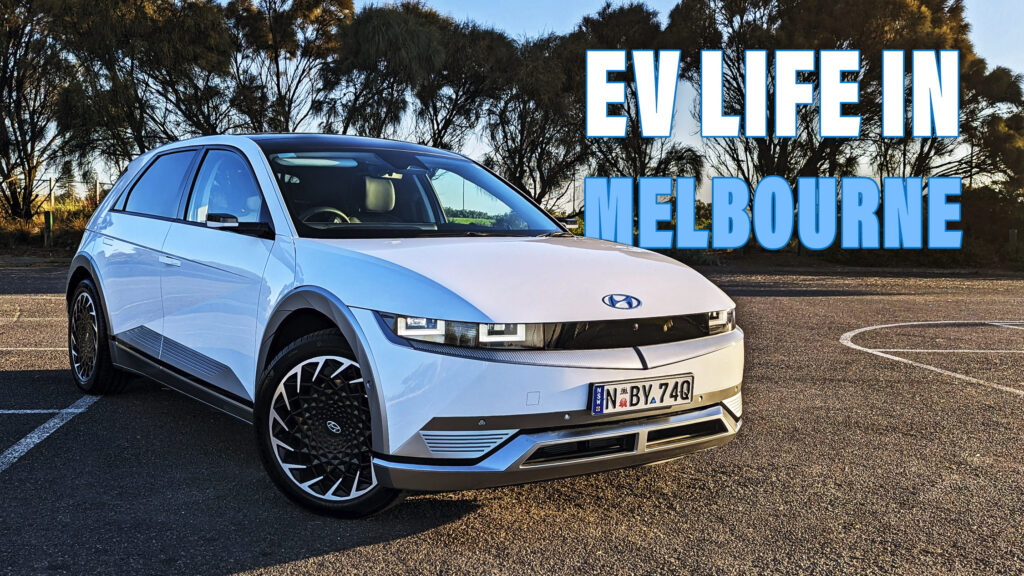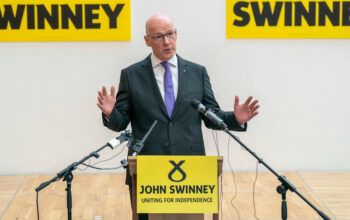Finding fast, reliable, and accessible chargers in Australia’s second largest city is not as easy as you may think
6 hours ago
 –>
–> 
–>
Battery electric vehicles have both supporters and critics who are equally passionate about their beliefs. While I personally enjoy the benefits of electric propulsion, I wanted to explore whether an EV is practical to live with in Melbourne, Australia’s second-largest city, with a population of over 5 million. Fortunately, the local branch of Hyundai provided me with the keys to an Ioniq 5, enabling me to put it to the test in various everyday-life scenarios.
A crucial limitation of this experiment was that my Airbnb apartment lacked access to a home charger or any type of plug whatsoever. This meant that I had to rely solely on the public charging network, a situation I had previously encountered in Athens, Greece, with less than favorable results.
Optimism Turns Into Anxiety
I received the Hyundai Ioniq 5 Epiq press car fully charged, with a decent range figure of 423 km (263 miles) displayed on the dashboard thanks to the 77.4 kWh battery pack. After my 25 km (15 miles) drive home and knowing I would live with the Ioniq 5 for a couple of weeks, I checked Hyundai’s built-in navigation system and Google Maps for available chargers nearby.
advertisement scroll to continue
To my surprise, a large area near the beach, including Albert Park and Middle Park, proved to be nearly devoid of chargers. However, there were plenty of options in the CBD (Central Business District) and a few close to my apartment in Port Melbourne, leaving me feeling optimistic about the future.
More: We Experienced The Nightmare That Prospective EV Buyers Are Afraid Of
Thanos Pappas / Carscoops
A few days later, while I still had plenty of range, I decided to check the two available chargers within a 1 km (0.6 mile) radius, to make sure they worked. To my surprise, there was no sign of charging plugs in the dedicated pins, no matter how hard I looked. The next closest EV charger was approximately 3 km (2 miles) away, located in the parking space of an electrician supplies store. Unfortunately, it was Sunday, and I was greeted by closed doors.
I was happy to see there was another option in a luxury car dealership nearby where I found as many as seven chargers and an equal number of dedicated EV parking spots that were accessible 24/7. Not having much time to spare at this moment, I pinned that spot and returned to my daily schedule with peace of mind.
Beware Of The Slow (And Broken) Chargers
Little did I know that the otherwise accessible and easy-to-reach chargers in the dealership were too slow to rely on. A few days later, I arrived there with an 8% battery level only to realize that they offered a maximum charging rate of 11 kW, which only added 13% charge in 1 hour, translating to an extra 65 km (40 miles) of range. Furthermore, for some reason, the “GET” charging application wasn’t available to download on my European Android phone, so I had to use my wife’s Australian-declared Google Play store in order to use the chargers.
Thanos Pappas / Carscoops
As much as I enjoyed checking out the cars in the dealership, I couldn’t stay there any longer. My goal was to find a charger near a park or mall where I could take advantage of the idle time and play with my kid. The next target was the Porsche and Tesla charging stations located in a hotel parking lot in St. Kilda. Unfortunately, both of them were standard wallboxes with no more than 11 kW of charging power. Realizing I didn’t have 6 hours to spare, I left in search of another solution, after wasting AU$8 to enter the hotel’s private parking area.
Next up was the popular Tesla Supercharger in a multi-story parking of a Coles supermarket nearby. As noted by other Hyundai owners online, the plug was compatible with the Ioniq 5, however I couldn’t make it work. With the whole family in the car I had to find another solution. You can imagine my frustration when after a 15 minute drive to the rooftop of an IKEA store I was greeted with “looks like we’re experiencing some issues” stickers on the “available” chargers. At this moment, I felt jealous of the ICE-powered cars that filled up effortlessly in gas stations and headed home feeling disgruntled.
Adding up to this feeling were a couple of brand-new but non-working chargers I accidentally found outside a basketball court. Their presence made me think how nice it would be if I could charge during my 40-minute game. Likewise, the popular MSAC center in Albert Park with the amazing pools and sports premises didn’t have a single charger in the parking lot.
Finding My Oasis At A Police Station And At A Public Library
advertisement scroll to continue
Thanos Pappas / Carscoops
After experiencing all the previous setbacks, I realized I needed to be more meticulous in planning my charging hunts if I wanted to make my driving time more productive. I searched for EV owner reviews and watched carefully for fast charging rates before I spotted my next target which was close to several coffee shops, and a small park. I’m talking about a publicly accessible “Chargefox” Tritium device located in the police station right next to the Malvern town hall.
This turned out to be an oasis as it took only 1 hour to go from 15% to 80% thanks to the charging rate of 47 kWh. Here I should note that the 2024 Hyundai Ioniq 5 is compatible with charging rates of up to 175 kW, meaning that only 17 minutes would be required to charge from 10% to 80% in an ultra-fast DC charger.
More: The Fastest Charging EVs – And Only One In The Top 10 Is From Tesla
With a cost of AU$0.45 (US$0.30) per kWh, I paid AU$22.96 (US$15.11) for the service, but at this point, all I cared about was getting home with a charged battery. More importantly, I got to spend this hour in the nearby playground with my son, which made the experience more enjoyable. From that moment, I knew I would be a returning customer, as this particular charger was only a 15-20 minute drive from my Airbnb, depending on the traffic.
By the way, the reason charging stopped at 80% was due to a limiter in the Hyundai’s infotainment system, which could be manually adjusted – although it’s worth noting that charging to 100% in fast chargers could have long-term effects on the battery’s health.
Thanos Pappas / Carscoops
A few days later, I managed to find another fast charger that would be convenient base on my schedule – this time from a company called Evie. Two 50 kW chargers with CCS plugs were located in the free parking of the Collinwood library, which was only five minutes away from my wife’s preferred yoga studio in the area. This location proved to be beneficial as it was near a great place for a toast – and next to a playground. I’m glad there were two available chargers as one of them was occupied by a Kia EV9 from the Australian Open’s fleet. In total, it took me 1 hour and 5 minutes to go from 43% to 100% with a cost of AU$22.26 (US$14.68). As you might have guessed, I used this charger again within the next week or so.
Longer Distance
Being on holiday with my family meant that I was keeping on organizing longer day trips. One of these was a 100 km (62 mile) drive from Melbourne to Bells Beach along the Great Ocean Road, with a stop in the seaside town of Torquay for lunch. While the range of the Hyundai Ioniq 5 was more than enough to go back and forth, I decided to use a RACV fast charger operated by Chargefox, based on my previous pleasant experience with the company.
Thanos Pappas / Carscoops
When I arrived, three out of the four chargers were occupied by a Hyundai Ioniq 6, a Polestar 2, and a Tesla Model 3. Thankfully, the empty spot was the rapid charger with a CCS port which was perfect for my ride. Initially, the charger didn’t work but after a quick phone call with Chargefox they reset it and it started filling up my battery. My son was sleeping in the car so I spent the next peaceful 25 minutes charging from 40% to 80% at rates of up to 69 kWh. This session was a bit more expensive at AU$0.60 (US$0.40) per kWh but I only got charged AU$10 (US$6.6) for the session, probably due to the earlier inconvenience.
My only complain is that the RACV chargers were 2.5 km (1.5 miles) away from the Torquay beach which had many options for lunch and leisure time. I was surprised that this tourist-friendly spot didn’t have more chargers despite having many parking places right in front of the shops.
Verdict
While modern EVs have decent range figures to start with, the lack of chargers in crucial spots like museums, parks, stadiums, malls, sports activity premises, and other points of interest means that EV owners living in Melbourne without access to a home charger have to do some research beforehand.
Judging from my experience, EV owners will often go out of their way to find a reliable, compatible, and fast-enough charger as the available spots listed on the vehicle’s built-in navigation and Google Maps app don’t always translate to an accessible working charger. Eventually, I located a couple of fast chargers in convenient locations, but getting there wasn’t easy as it should be.
Our experiment highlighted the need for significant improvements in Australia‘s charging infrastructure before it is fully prepared for the EV era. While the majority of EV buyers will likely charge at home, there remains a considerable portion of the population living in apartments or without access to a plug, even in underground parking facilities. Hopefully, the number of fast chargers will multiply in the near future, and public parking spaces will be equipped with charging stations.
Additionally, the newly-established standards set by the Australian government require all state-funded EV chargers to operate at least 98% of the time, which represents a positive step forward in the right direction.

